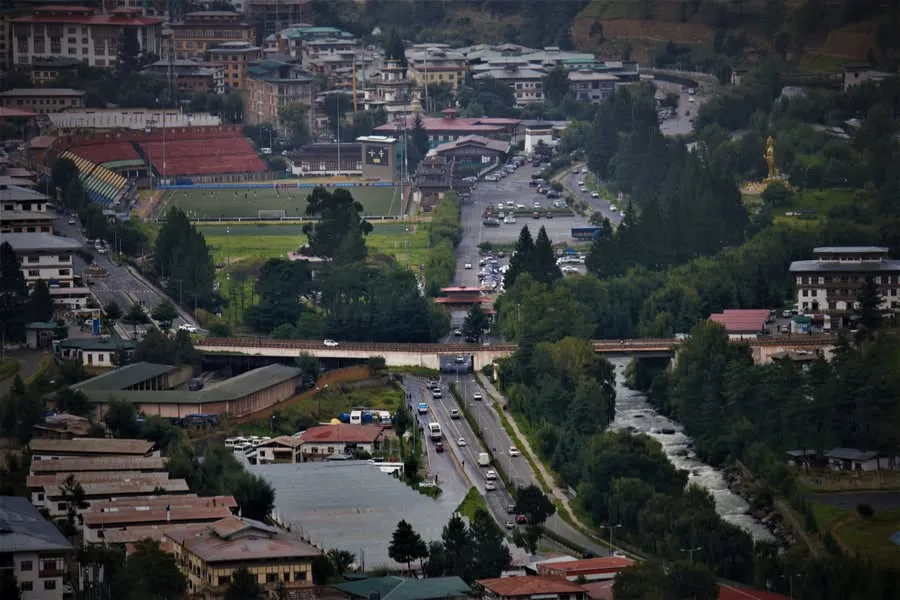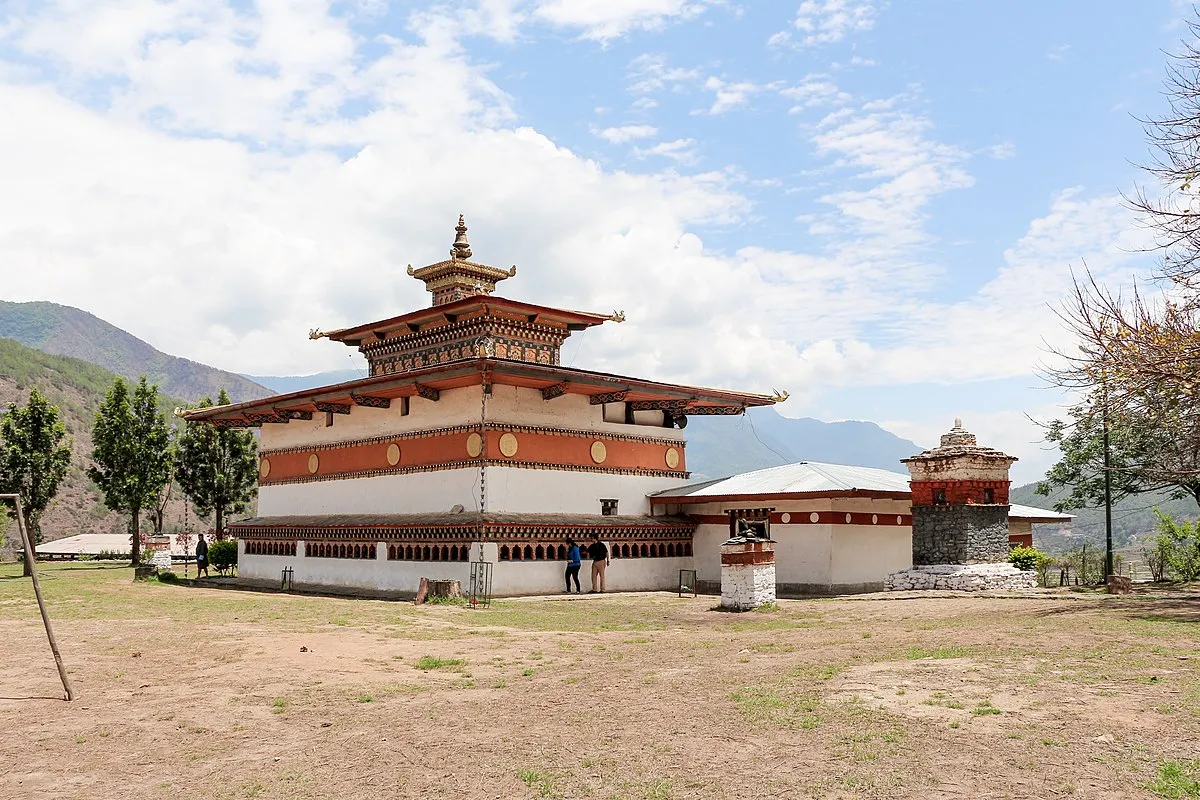1. Overview
Lungtenzampa Bridge, also known as the “Bridge of Prophecy,” is a symbolic and functional bridge in central Thimphu, Bhutan. Spanning the Wang Chhu River, it connects key government buildings and the commercial areas of the city. More than just a crossing point, the bridge derives its name from a prophecy by Guru Rinpoche (Padmasambhava), who foretold that a bridge would be built here centuries ago. Today, it serves as a vital route while standing as a silent witness to the blending of Bhutan’s spirituality and modernization.
Location – Google Maps Link
2. History
- Named after a prophecy made by Guru Padmasambhava in the 8th century
- “Lungtenzampa” translates to “Bridge of Prophecy”
- Connects the south-central areas of Thimphu across the Wang Chhu River
- One of the oldest crossing points in the region historically
- Lies near key landmarks like the Royal Textile Academy and Memorial Chorten
- Provides access to significant government and royal institutions
- Known for its scenic river views and cultural symbolism
- Used daily by pedestrians, vehicles, and cyclists
- Often featured in local folklore and Buddhist teachings
- The current bridge is modern but retains its cultural and spiritual name
3. What Makes Lungtenzampa Bridge Popular?
Lungtenzampa Bridge is famous not only for its role in Thimphu’s infrastructure but also for its mythical origins. Legend holds that Guru Rinpoche predicted its location, making it a site of spiritual interest. It provides a strategic view of Thimphu’s skyline, riverbanks, and is frequently used as a reference point by locals.
4. Overall Ratings (1 to 5 Stars)
Overall Rating: ⭐⭐⭐⭐☆ (4/5)
Historical Significance: ⭐⭐⭐⭐☆ (4/5)
Scenic Beauty: ⭐⭐⭐⭐☆ (4/5)
Cultural Experience: ⭐⭐⭐⭐☆ (4/5)
Accessibility: ⭐⭐⭐⭐⭐ (5/5)
5. Weather
Best Time to Visit: March to May and September to November
Temperature Range: 12°C to 26°C
These seasons offer pleasant temperatures and clearer views along the riverbanks.
6. Nearest Five Hotels
- Hotel Osel – Located a short drive from the bridge
- Taj Tashi Bhutan – Luxury hotel with close access to both cultural and city spots
- Le Méridien Thimphu – Central, modern hotel ideal for tourists
- Hotel Druk – Elegant hotel in the heart of Thimphu
- Norkhil Boutique Hotel & Spa – Modern boutique stay with cityscape views
7. Timings
Open: Daily (24 hours)
Note: Best visited during daylight hours for views and photographs
8. Time Required to Visit
Visit Duration: 15 to 30 minutes
Ideal for a quick stop during a city tour, photography, or cultural storytelling
9. Entry Fees & Ticket Booking Details
Entry Fee: Free
Booking: Not required
10. Things to See & Do
- Walk across the bridge and view the Wang Chhu River
- Take photos of the river and surrounding Thimphu cityscape
- Observe the bridge’s central role in Bhutanese daily life
- Reflect on its connection to Bhutanese prophecy and spirituality
- Visit nearby attractions like the Memorial Chorten and Royal Textile Academy
11. Best Time to Visit
Season: Spring and Autumn
Time of Day: Morning or late afternoon for best lighting
Day of Week: Any day—weekdays offer less foot traffic
12. Nearest Parking Spots
- Street-side parking available near both ends of the bridge
- Nearby buildings and tourist sites have additional vehicle space
- Taxis and tour buses can stop nearby for quick access
13. Tips for Visitors
- Combine your visit with nearby landmarks for a full city walking tour
- Respect pedestrian pathways—it’s an active road bridge
- Ask locals about the prophecy legend for cultural context
- Ideal spot for sunset photos over the Wang Chhu River
- Visit early morning for a peaceful atmosphere
14. How to Reach the Place
By Car: 5–10 minutes from anywhere in central Thimphu
By Taxi: Readily available and affordable
By Foot: Walkable from key attractions like Memorial Chorten or Clock Tower Square
15. Nearby Attractions to Combine for the Visit
- National Memorial Chorten – Stupa commemorating the Third King
- Royal Textile Academy – Learn about Bhutanese weaving traditions
- Centenary Farmers Market – Explore Bhutanese produce and crafts
- Tashichho Dzong – Bhutan’s administrative and religious fortress
- Folk Heritage Museum – A journey into rural Bhutanese life



